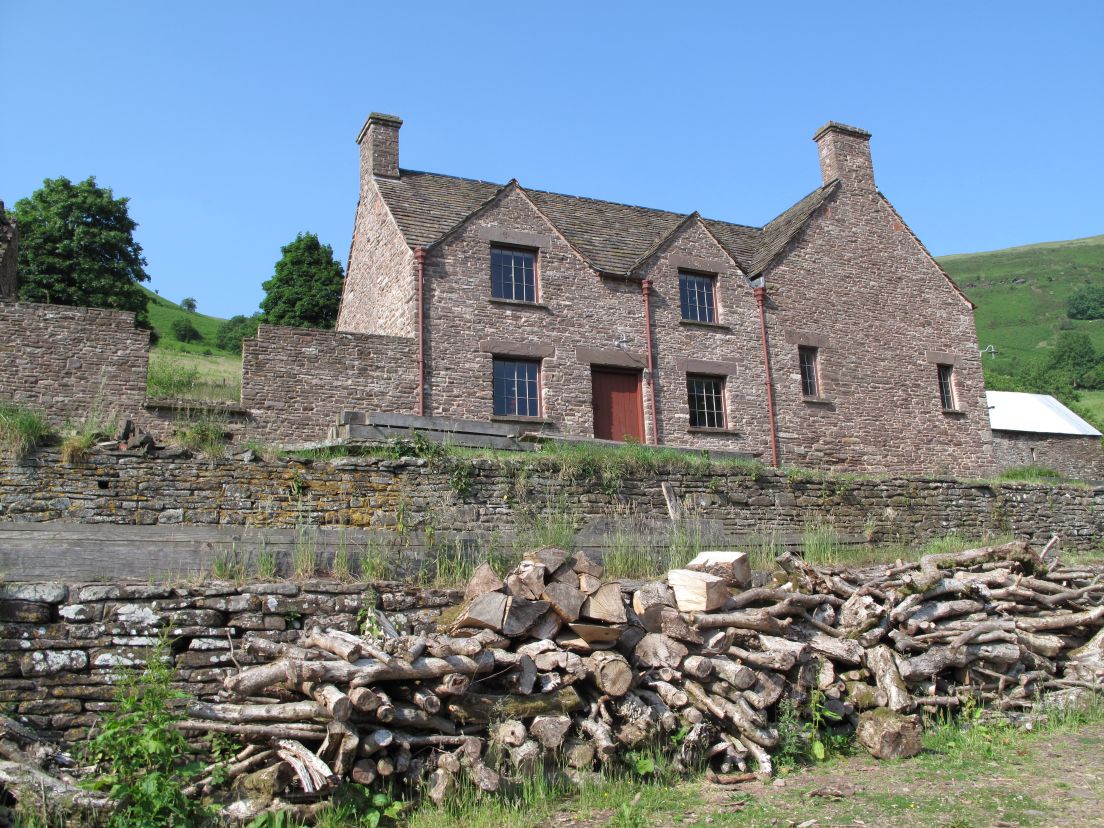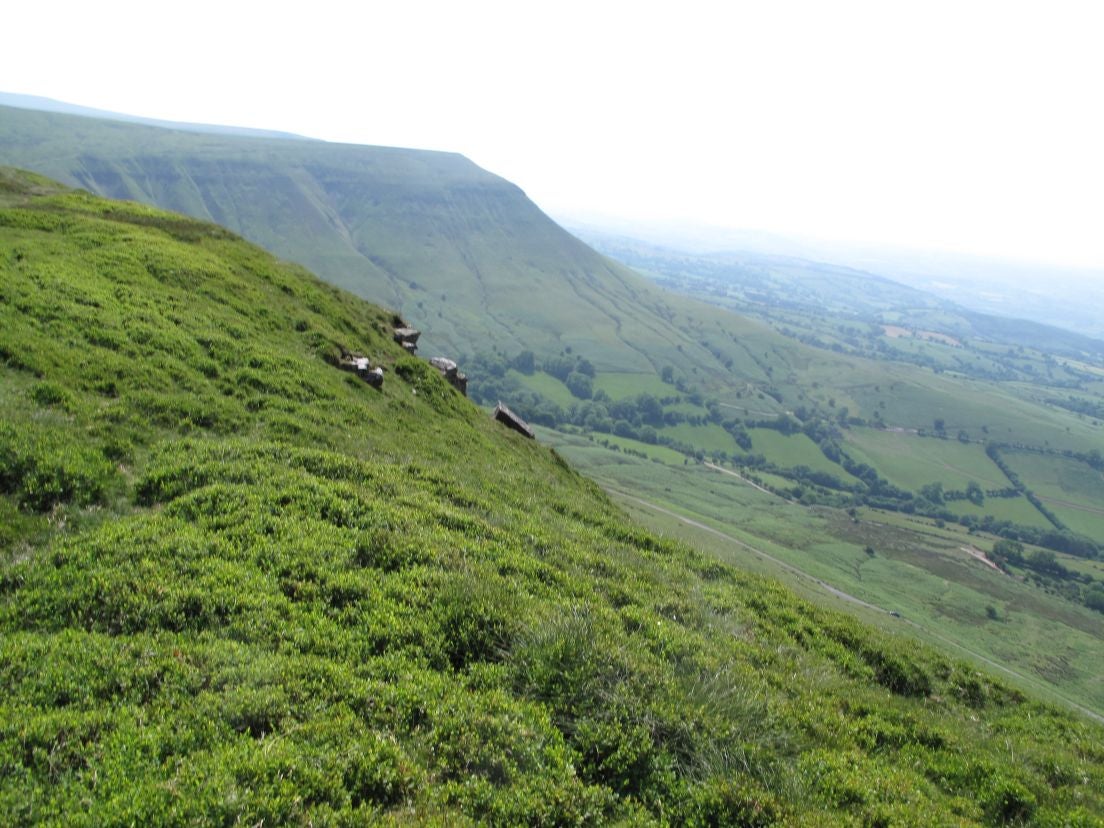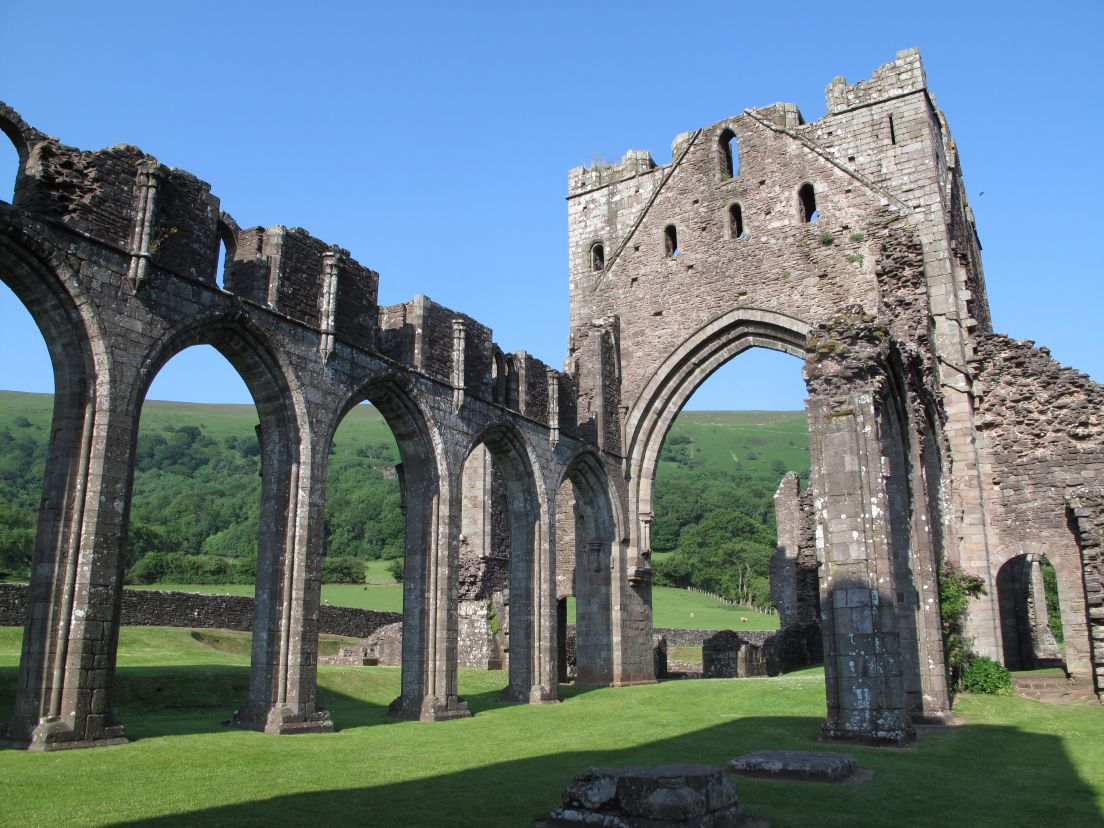Bruce Chatwin's Wales: One of the finest one-day walks in Britain
You need not go to the ends of the earth to get close to the spirit of Bruce Chatwin. Simon Calder heads for Wales, to the home and views that once inspired the great adventurer

Your support helps us to tell the story
From reproductive rights to climate change to Big Tech, The Independent is on the ground when the story is developing. Whether it's investigating the financials of Elon Musk's pro-Trump PAC or producing our latest documentary, 'The A Word', which shines a light on the American women fighting for reproductive rights, we know how important it is to parse out the facts from the messaging.
At such a critical moment in US history, we need reporters on the ground. Your donation allows us to keep sending journalists to speak to both sides of the story.
The Independent is trusted by Americans across the entire political spectrum. And unlike many other quality news outlets, we choose not to lock Americans out of our reporting and analysis with paywalls. We believe quality journalism should be available to everyone, paid for by those who can afford it.
Your support makes all the difference.The Vision Farm is tall and handsome, its complexion warmed by the dwindling afternoon sun. The northern part faces the track, with four neat windows flanking a stout wooden door the colour of oxblood; the southern portion seems to have its back to the world, glancing round with two narrow windows like suspicious eyes.
A casual barricade of logs stacked up for winter reinforces the advice from my guide: "The farm is not open to the public, and walkers are requested not to knock on the door and ask to look around." Why might you want to do that, anyway? After all, hikers can be bothersome enough to sheep without bothering their owners, too. The temptation to get a closer vision of The Vision is that this was once the home, and the inspiration, of Bruce Chatwin.
His brilliant 1982 novel On the Black Hill is set in a lonely farmhouse on the cusp of Wales and England. The location: Brecon Beacons National Park in south-east Wales, but only just. The brow of the hill that rises behind the farmhouse forms the course of the Offa's Dyke National Trail, with England on the far side.
My guide is another distinguished travel writer, Roger Thomas, who lives in Llangattock in the next valley west. A previous commitment exploring some mightier hills in Provence meant that he couldn't join me in person. But he has written the definitive guide to the area, and so I travelled with him in spirit. And with Bruce.
Forty years ago this autumn, Chatwin set off on the journey that was to turn him into a towering literary figure. He was, like the farm, tall and handsome with a warm complexion. He was also a precocious 34-year-old whose adult life had redefined "dilettante". Somehow he had procured not only a magazine commission to travel to New York and write about the Guggenheim family, but also an astonishing $3,500 to cover expenses (about £20,000 at today's value). So the editor was no doubt delighted when Chatwin wrote from Lima to explain that the cash had gone south with him and he would be hunting dinosaurs at the far end of Latin America. His biographer, Nicholas Shakespeare, called it: "A journey that would transform a truant journalist to one of the most stylish and original writers of the late 20th century."

The writer spent four sometimes-glorious months in Patagonia. You could chase Chatwin to the ends of the Earth, to the "absolute remoteness and foul climate" of southern Chile and Argentina. But I recommend a more accessible alternative: catch a train from Manchester or London at around 7.30am and set off on one of the finest one-day walks in Britain – while also following the steps of a literary giant.
You arrive at Abergavenny station at 10am, whence a taxi will whisk you to the foot of Hatterall Ridge. The path from here is an excellent antidote to a couple of hours sitting on a train: a steep, sharp ascent that within 20 minutes of hard graft elevates you to around 1,500ft.
The track has probably been around for three millennia, but in the 21st century you can discount the risk of border skirmishes and focus purely on the joy of the walk. To the west, the Brecon Beacons breach the horizon, which retreats into a haze above the Black Mountain at the far end of the National Park. Even this bleak upland did not constitute "a stretch of open countryside uncontaminated by Englishmen". It was in search of such a location that 153 Welsh colonists drifted 10,000 miles south-west to Patagonia by way of the Falklands to create a corner of the continent that is forever Wales, with towns called Trelew and Port Madryn.
Names around here are confusing, too; that Black Mountain is far from the Black Mountains that crowd together here. And compared with, say, Snowdonia, they are not intimidatingly mountainous. Chatwin called his book about long lives and crushed hopes On the Black Hill, though the particular rise of that name juts into the English side rather than the Welsh flank.
As you walk north along the frontier, England looks much the greener and more pleasant land. A crumple of rock at the top of the ridge subsides into a soft-focus patchwork of meadows embroidered by hedgerows and punctuated by copses of woodland, with the alluring name of Golden Valley. Unlike Offa's Dyke itself, the ridge is a mighty natural frontier, where two contrasting landscapes have nurtured separate cultures. Much more distinct, indeed, than the mere smudge that seems to separate Chile and Argentina as the Andes run out of steam.
The inevitable connectedness of humanity is evident at Pile of Stones, a man-made feature that is what it says on the map. Here, the path along the border is crossed by an ancient east-west trail. You could take a short, sharp cut down to the Vision Farm, but with British Summer Time prevailing for a few more weeks you should instead press on north.
The path sways through grassland flecked by wildflowers and climbs gently to the highest point of the ridge. A triangulation pillar emblazoned with a red dragon indicates that you are a pleasing 2,001ft above the Bristol Channel, rippling gently in the mist behind you.
Hay Bluff, the precipitous end of Hatterall Ridge, does two good things: it presents another grand prospect of the corrugated convergence of England and Wales, and invites you to descend along a switchback path to the world of roads, farmhouses and even an odd relic of the 20th century in the form of a red telephone box.
Now you head south through Gospel Pass and along the valley of the Honddu, thick with trees nourished by the river. The western side carries a country lane, but the east side is much more rewarding. At times, it feels like a secret footpath that sneaks through gates and over stiles, and brushes against the Vision Farm.
"One of the windows looked out over the green fields of England; the other looked back into Wales, past a clump of larches, at the Black Hill." Chatwin's literary grid reference doesn't quite work for this location, but for him the story was more important than the truth.

He was a weaver of life and death, fact and fiction, as some of the Welsh community he met in Patagonia were to discover. As Nicholas Shakespeare writes: "These were private and religious farmers whose ancestors had come to Patagonia expressly to get away from the kind of Englishman represented by a young man with a socking great forehead and blue staring eyes who bowled into their village wearing green Bermuda shorts and announced himself in a ringing public-school accent as Bruce Chatwin."
Whatever shade of shorts you are wearing, a pair of rewards await downstream. The first is the mighty ruin of Llanthony Priory, whose 12th-century skeleton remains impressively intact. The Norman foundations and Gothic arches have endured centuries of border skirmishes as well as Henry VIII's dissolution, and today provide a fine finale to the walk.
Unlike most Augustinian abbeys, this one has its own hotel and bar. Chatwin drank a fair amount during his Patagonian adventure, but did not romanticise the Welsh connection in Latin America. In Port Madryn ("a town of shabby concrete buildings") he dines on "a lump of burnt lamb that bounced on the plate" and witnesses a drunk, desolate Indian: "His eyes were glittering slits in the red leather shield of his face. The jugs were of green plastic in the shape of penguins." You don't get that sort of thing in south-east Wales.
Chatwin died a quarter-century ago from Aids, aged 48. His ashes are scattered beside a church in a hill town in southern Greece: far from the Vision Farm, and even further from Patagonia – the bitter end of nowhere.
Travel essentials
Getting there
The closest station is Abergavenny, on the Cardiff-Manchester line; connections from other stations at Newport, Shrewsbury and Crewe. A taxi from Abergavenny station to the start of the walk costs about £15, and from Llanthony Priory about £24.
More information
OS map (1:25000): Brecon Beacons East, Explorer OL13
'Great Walks in the Brecon Beacons and Pembrokeshire Coast' by Roger Thomas (Ward Lock) is celebrating its 25th birthday this year, but is still a fine companion and is easily obtainable online.
'In Patagonia' and 'On the Black Hill' by Bruce Chatwin are both available as Vintage Classics, £8.99
Join our commenting forum
Join thought-provoking conversations, follow other Independent readers and see their replies
Comments